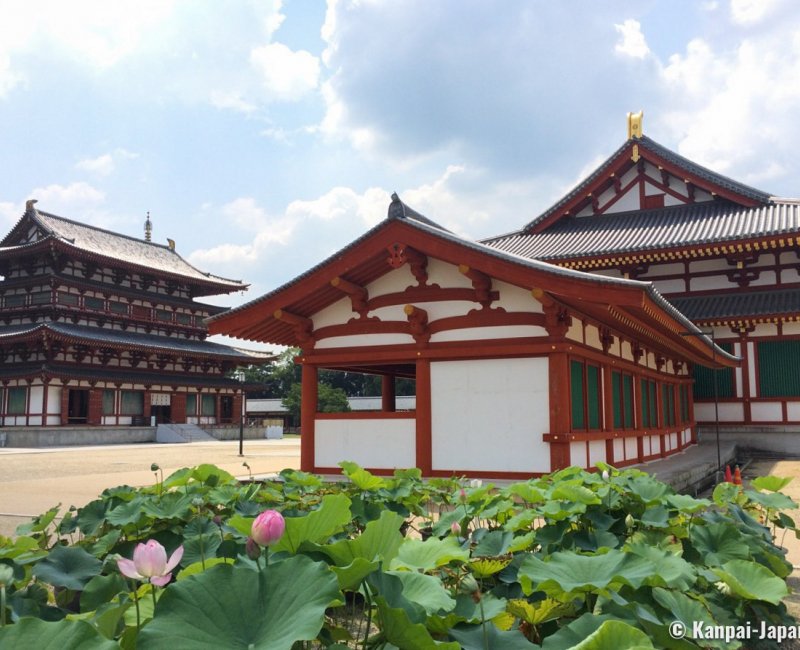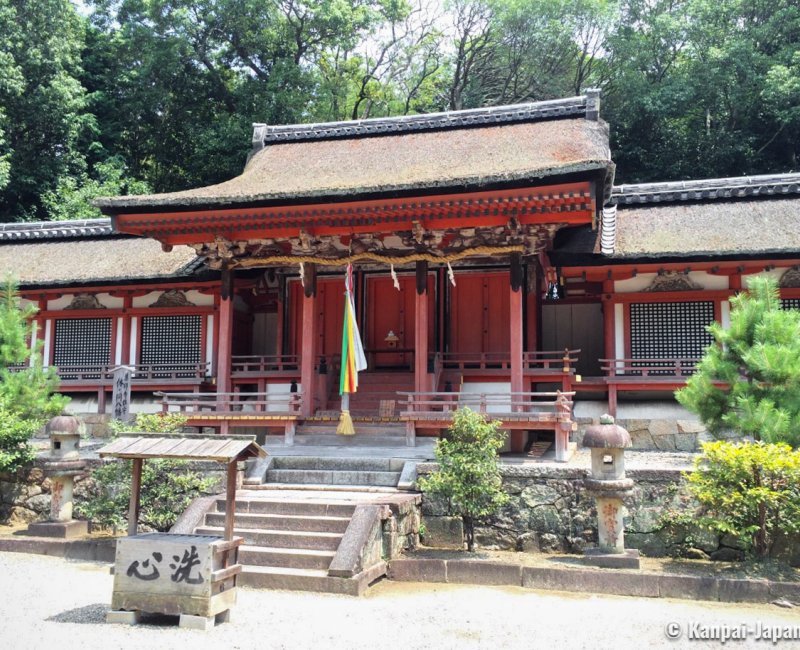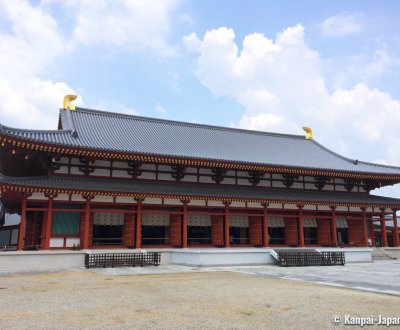Yakushi-ji
The Main Temple of Nara Hosso School
Yakushi-ji is the first Buddhist temple of the Hosso sect located in Nara, but away from its touristic center, on the west side of the city. Of very ancient origins and enlisted in the UNESCO World Heritage since 1998, the site was almost entirely reconstructed recently. It features a main hall sided by two perfectly symmetrical majestic pagodas.
Sightseeing Nara over several days allows to visit more than the usual must-sees that are the Todai-ji, Kasuga Taisha and their surroundings, and explore other historical districts. In the west of the city, three important sites are awaiting discovery: Heijo Imperial Palace, Toshodai-ji temple and Yakushi-ji temple.
Founded in 680 by Emperor Tenmu, Yakushi-ji is one of Japan’s most ancient temples. It was built to honor Yakushi Nyorai, the Buddha of medicine, to favor the recovery of the Empress who was severely ill. First built in Asuka, the Buddhist temple was moved when the capital was transferred to Nara in 718.
Most of the original constructions have disappeared over time due to several fires 🔥 and destructive events. A great reconstruction project began in the second half of the 20th century and restored the site to its past glory. However, amateurs of old stones might be disappointed by the vermilion pavilions, that were indeed beautifully rebuilt, but lack the patina of time.

Two pagodas and perfectly symmetrical pavilions
One of the Yakushi-ji’s characteristics is its perfectly symmetrical layout. The perspective it created makes the already impressive buildings even more massive. Since the renovation works have ended in 2020, there is no sheeting spoiling the visit anymore.
The view on the main hall Kondo and the lecture hall Daikodo as well as on both pagodas named Tôtô ("East pagoda") and Saitô ("West pagoda") is majestic and inspires great respect to visitors.
Rebuilt to its original state in the 1970s, the Kondo shelters the Yakushi Triad, an authentic masterpiece of ancient Buddhist art designated National Treasure. The bronze statues trio displays the Medicine Buddha in its center, sided by the two bosatsu Nikko and Gakko.
Tôtô Pagoda is specific as it is the only remaining original structure that survived to this day. It is easily recognizable for it is the only building of the site not painted vermilion. While it is a 3-story pagoda, its external architecture suggests it has 6 floors.
Photographers equipped with a good zoom lens can shoot a beautiful view on the upper floors of the pagodas and on the Yakushi-ji’s roofs from the neighboring Lake Oike.

The modern complex of Genjo-sanzoin Garan
Yakushi-ji’s precincts also include the visit of Yasumigaoka Hachiman-gu shrine, located at the south gate of the enclosure, and of another neighboring site named Genjo-sanzoin Garan. Built in 1991 this small complex is home to a beautiful octagonal pavilion dedicated to Chinese monk Genjo, who lived in the 7th century and is still renowned for his important travels in India and Central Asia.
Its location was carefully planned as Genjo mostly taught the basis of the Hosso school, of which Yakushi-ji is the main temple. Moreover, the octagonal building preserves the remains of the Chinese monk, behind which are displayed the works of Hirayama Ikuo (1930 – 2009), a famous contemporary painter and survivor of Hiroshima atomic bombing. However, the pavilion is closed to the public almost 6 months in the year (see opening periods below).
Visitors knowledgeable in ancient history of Japan and Buddhism will enjoy discovering the Yakushi-ji. For the others unfortunately, the site may seem somewhat a little bit too artificial.

